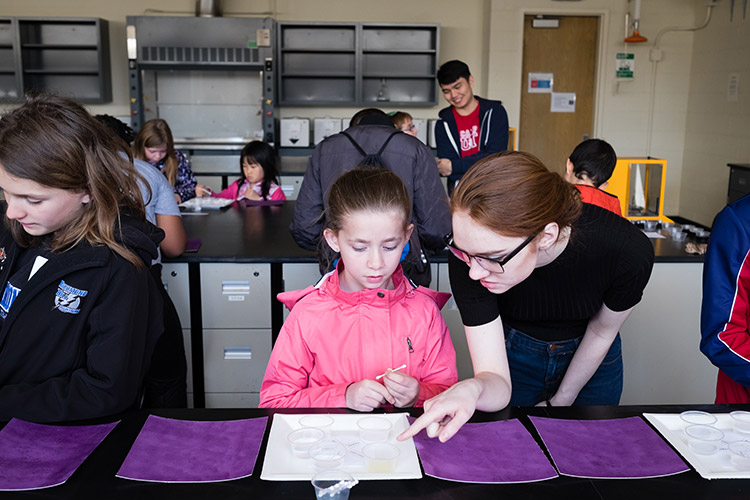Jason Harlow usually teaches his introduction to physics course with lectures on vector algebra, error analysis and Hooke’s law.
But on Thursday, Harlow, an associate professor, teaching stream in the physics department, tweaked his lesson plan slightly for a younger audience. About 370 kids from Grades 4 to 7 came to the University of Toronto’s downtown Toronto campus for the 25th annual Bring Our Children to Work Day, and many more visited U of T Scarborough and U of T Mississauga.
On a tour of the physics department, Harlow showed two dozen girls and boys and a few parents how a superconducting, levitating train can move around a track after it is cooled to 200 degrees below zero, using liquid nitrogen. The students oohed and aahed as they watched the train go round and round without touching the surface. “It’s a ghost train!” one child said.
The class had no shortage of questions, and Harlow wasn’t surprised by the enthusiasm.
“Physics is the most basic science. It’s very, very, very simply, ‘What is going on?’” he told U of T News.
“And you don’t need any special equipment – although nitrogen definitely helps,” he joked.
Earlier in the afternoon, the whole group of visiting youngsters learned about how the ear registers sound from Barbara (Dee) Ballyk, an associate professor, teaching stream and the faculty lead in the Faculty of Medicine for the MD program.
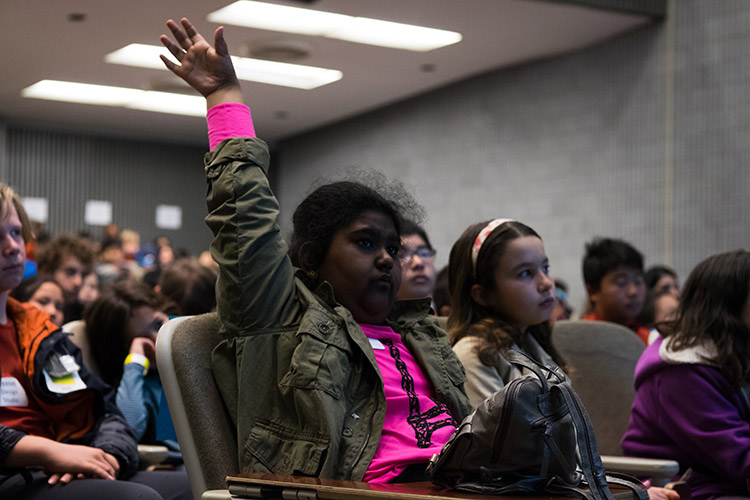
Some of the more squeamish kids in the auditorium yelled “Ew!” at the sight of videos of a beating eardrum and moving voice boxes.
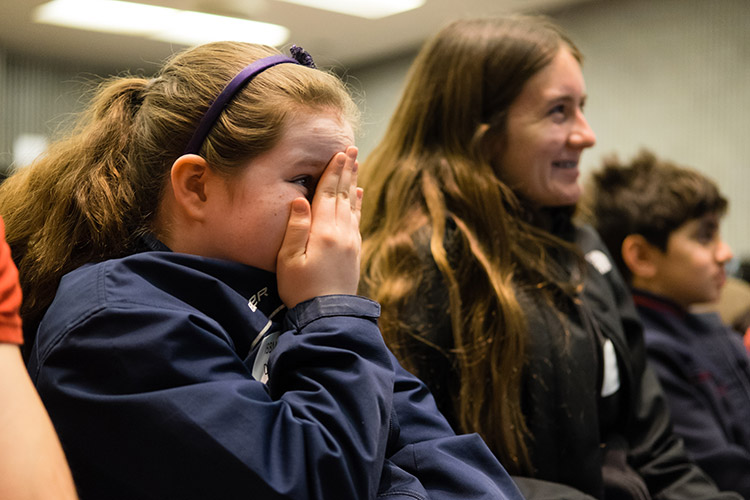
After showing the kids slides of healthy and damaged auditory hair cells, Ballyk warned them to listen to music at medium volume and to wear earplugs at concerts to prevent hearing loss.
After her lecture, the students split off for tours of departments – everything from medicine to archeology – and of other important spots at the university, such as campus police and Hart House.
Over at U of T Scarborough, Olympian and student Rosie Cossar told a class about her career as a gymnast representing Canada.
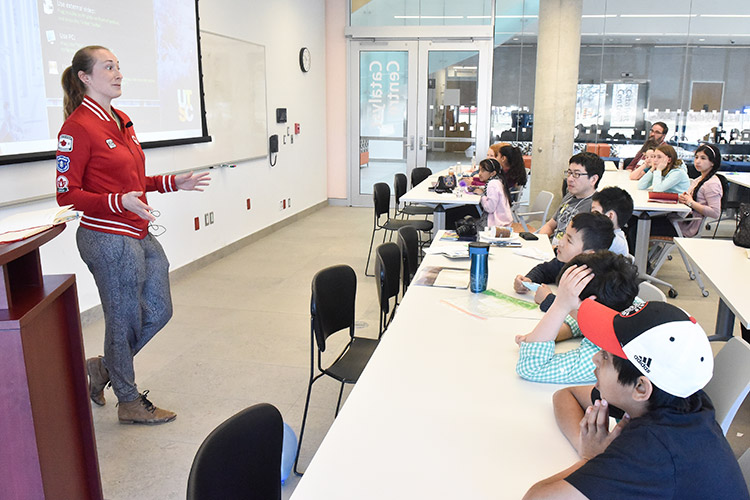
Meanwhile, at U of T Mississauga, kids visiting a physics lab (below) learned first-hand about force and momentum while passing a basketball around on a spinning see-saw.
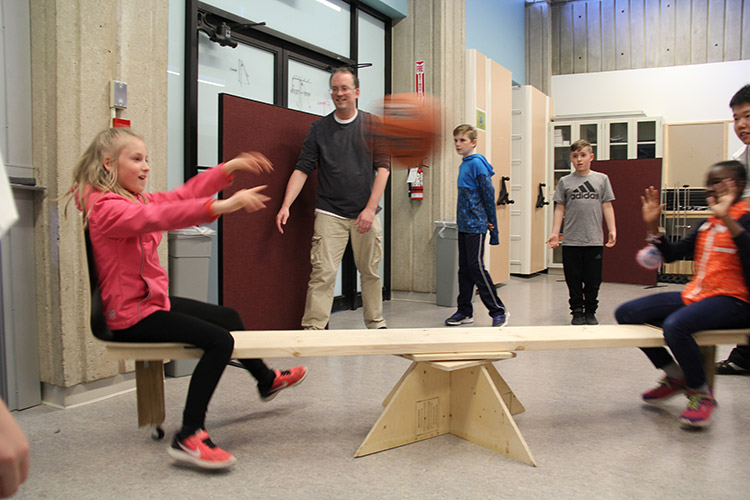
Downtown, the students who opted to visit the chemistry labs got to see a soda geyser, made of Mentos and cola, spray 12 feet above the courtyard near Lash Miller Chemical Laboratories.
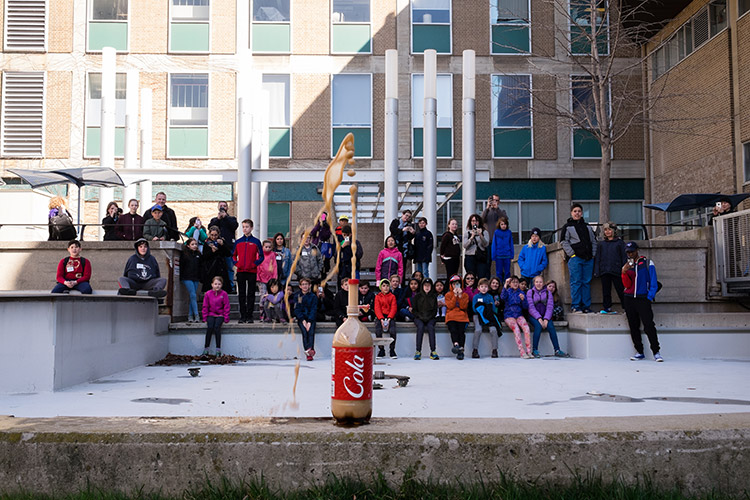
Afterward they made paintings using safe acids and bases on a canvas dyed with red cabbage water, which contains the pH indicator anthocyanin. “This is to show them that chemistry is all around them,” said Patricia Meindl, the chemistry librarian who organized the tour.
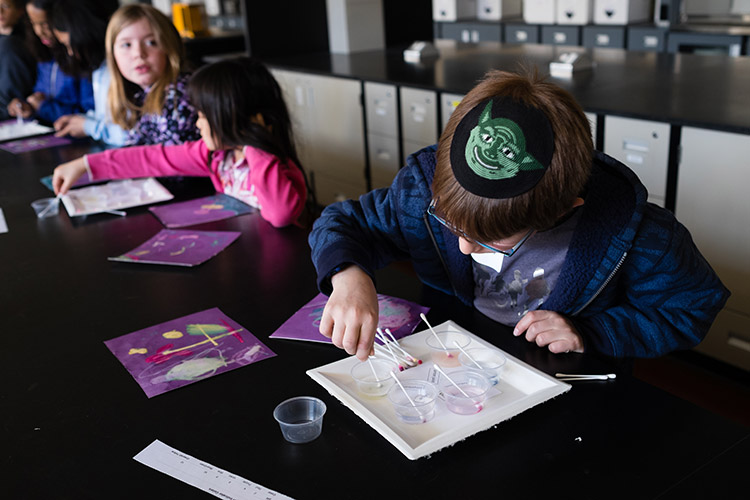
Katherine Burton (below, right) is an undergraduate majoring in chemistry and molecular biology. As a lab tech for the demonstration, she explained why the paper changed colour. “I think children are all really intelligent, and if you tell them it’s just a change in what the compound’s background is, and how it changes aromaticity, they actually understand more than you’d think,” she said.
